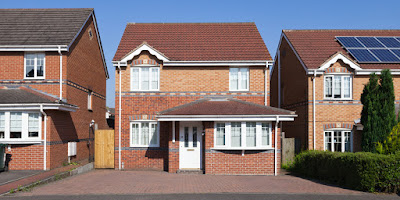Things to consider while doing Loft Conversion
 |
| Architects London |
A loft conversion is the best
way to create that much-needed extra space in your home. Whether you live in an
old Victorian styled semi-detached or a mid-terrace house; a loft conversion
could be your next step in home improvement. Many architectural designers in London
offer bespoke loft conversion in London, but as a homeowner, you need to brush
up your basics. Here are a few useful tips on how to prepare for a loft
extension.
1. Think like a homeowner
Put your current needs before
your future financial investment concerns. Eventually, you are adding value to
your home by expanding the usable space, but the needs of your family are
always a priority. While designing this new extension, plan the area according
to how you'll use it; will it be a
sizeable open playroom? A master bedroom with a bathroom? Or a smaller guest
bedroom? Just don't try to build something that will go way over your budget!
2. Head Height
Before beginning a loft
conversion, you need to be sure that your loft is high enough to support
conversion. Some lofts just aren't sufficiently taller, and this can cause many
issues later. Building regulations denote that a standard loft should be at
least 180 cm from the floor. However, to have a comfortable space after
conversion, it is advisable that your loft exceeds 230 cm from the floor to the
roof. You should also consider essentials such as space for your plumbing and
water tanks, the staircase to the loft and other things.
3. Structural Integrity
It's not just about adding space
to your home. Many architects in London suggest that
building an extension in your loft will increase the weight to your home, and
even though this will only be a tiny increase, it is important to ensure that
the main structure of your house can bear the extra weight. There are many ways
you can go about this, but the most common procedure includes exposing the
foundations to see their depth as well as strength. It is the foundation of
your building, together with the beams, pillars and lintels, that will carry
the added weight.
4. Windows And Natural Light
If you refer the architecture
practices in London, loft conversions 'don't need extensive alterations
to create provisions for natural light. Skylights are an excellent alternative
for your new loft space and will be the best source for all the natural light
you need. They are also a great way to save on energy bills, as they help to
keep your home warm during the cold weather.
5. Insulation
All the best interior
designers in London will press on
insulation to make your loft comfortable to live in. Heat insulation is one of
the essential aspects of a loft conversion. As per the expert architects
in South London, it may also be a great design to add underfloor
heating to provide extra warmth during the winter months.


Nice information. Thanks for sharing such an amazing article. For top interior architects please visit our website.
ReplyDeleteHouse EXTENSIONS in Clapham